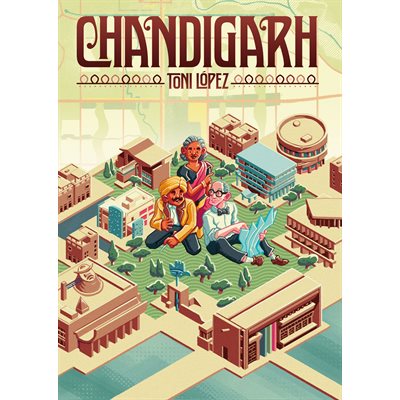Connect here
-
- Some services are not accessible on smartphone
- Open a session
- My Account
- Customer Service
-
Products
-
Pre-orders
Pre-orders
- Featured Pre-orders
- All Pre-orders
- 2025 - Week 12 (Mar 17)
- 2025 - Week 10 (Mar. 3)
- 2025 - Week 9 (Feb. 24)
- 2025 - Week 8 (Feb 17.)
- 2025 - Week 6 (Feb. 3)
- 2025 - Week 5 (Jan. 27)
- 2025 - Week 4 (Jan. 20)
- 2025 - Week 3 (Jan. 13)
- 2025 - Week 2 (Jan 6)
- 2024 - Week 51 (Dec. 16)
- 2024 - Week 50 (Dec. 9)
- 2024 - Week 49 (Dec. 2)
- 2024 - Week 48 (Nov. 25)
- 2024 - Week 47 (Nov. 18)
- 2024 - Week 46 (Nov. 11)
- 2024 - Week 45 (Nov. 4)
- 2024 - Week 44 (Oct. 28)
- 2024 - Week 43 (Oct. 21)
- 2024 - Week 42 (Oct. 14)
- 2024 - Week 41 (Oct. 7)
- 2024 - Week 40 (Sept. 30)
- 2024 - Week 39 (Sept. 23)
- 2024 - Week 38 (Sept. 16)
- 2024 - Week 37 (Sept. 9)
- 2024 - Week 36 (Sept. 2)
- 2024 - Week 35 (Aug. 26)
- 2024 - Week 34 (Aug. 19)
- 2024 - Week 33 (Aug. 12)
- 2024 - Week 32 (Aug. 5)
- 2024 - Week 31 (July 29)
- New Releases
- Fantasy Flight
- Board Games
- Miniature Board Games
- Tabletop Miniatures
- Collectible Card Games
- Books
- Puzzles
- Roleplaying Games
- Accessories
- Clearance
- Displays
- Decor
- Toys
- Plushies
- All
-
Pre-orders
-
Accessories
- Publishers
- New Releases
- Pre-orders
- Magic Deals
- Clearance
- Contact Us
- FAQ
- Application Request
- Lion Rampant Imports>
- Products>
- June 24 2024>
- Chandigarh
Chandigarh
Product Code: LDNV460001
In 1951, the Indian government commissioned the renowned architect Le Corbusier to design a new capital for the state of Punjab. Thus, Chandigarh was born.
In the game Chandigarh, players in the role of urban planners are in charge of building this modern city from scratch. They will construct buildings, try to take advantage of buildings constructed by others, use the abilities of the different municipal employees, and try to position themselves in the key locations of the city, all with the aim of achieving the patterns of the plans they have chosen. Whoever scores the most prestige points wins.
In more detail, the city of Chandigarh is represented by a 4x4 grid of sector tiles, with each sector having multiple plots. These sectors intersect at junctions, with the edges of these tiles creating streets between the sectors. You each start with a project card that shows an arrangement of buildings, along with two different colored buildings from the four colors available; your architect starts on a junction in the city.
On a turn, you can move your architect up to the total numbers of footprints on your active project cards, stopping at each junction (if you wish) to place a building from your reserve on an empty plot next to a street that's adjacent to the junction you occupy. If you occupy the final plot of a sector, place one of your supervisors on this tile. Alternatively, on a turn you can choose a new project card from the display, placing it on the left or right side of your row of active project cards and taking buildings from the reserve based on the card you just placed and the card adjacent to it. If you now have four cards in a row, you immediately score the card at the opposite end of the row from the card you just placed. Score the points listed on this card each time the pattern on it occurs in the city.
Four specialist tokens start in the corners of the city, and if you construct a building of the specialist's color in the sector where they are located, you gain the power of that specialist for the remainder of the game and move them to a different sector. Each specialist has six different abilities, some that score you bonus points and others that give you special powers during play.
In the game Chandigarh, players in the role of urban planners are in charge of building this modern city from scratch. They will construct buildings, try to take advantage of buildings constructed by others, use the abilities of the different municipal employees, and try to position themselves in the key locations of the city, all with the aim of achieving the patterns of the plans they have chosen. Whoever scores the most prestige points wins.
In more detail, the city of Chandigarh is represented by a 4x4 grid of sector tiles, with each sector having multiple plots. These sectors intersect at junctions, with the edges of these tiles creating streets between the sectors. You each start with a project card that shows an arrangement of buildings, along with two different colored buildings from the four colors available; your architect starts on a junction in the city.
On a turn, you can move your architect up to the total numbers of footprints on your active project cards, stopping at each junction (if you wish) to place a building from your reserve on an empty plot next to a street that's adjacent to the junction you occupy. If you occupy the final plot of a sector, place one of your supervisors on this tile. Alternatively, on a turn you can choose a new project card from the display, placing it on the left or right side of your row of active project cards and taking buildings from the reserve based on the card you just placed and the card adjacent to it. If you now have four cards in a row, you immediately score the card at the opposite end of the row from the card you just placed. Score the points listed on this card each time the pattern on it occurs in the city.
Four specialist tokens start in the corners of the city, and if you construct a building of the specialist's color in the sector where they are located, you gain the power of that specialist for the remainder of the game and move them to a different sector. Each specialist has six different abilities, some that score you bonus points and others that give you special powers during play.
- Designer : Toni López
- Artist : Edu Valls
- Number of players : 2 - 4
- Playing time : 45 - 60
- Recommended ages : 10+
- Language : EN


